Kids love games, full stop. And even though games are typically relegated to a board or a field, they can play out in the kitchen, too. In fact, cooking games for kids are a great way get everyone involved in mealtime, and they can take some of the skepticism out of certain foods.
“Food and cooking games are so beneficial for kids,” explains Stephanie Van’t Zelfden, a registered dietitian specializing in child nutrition and picky eating. “For starters, they give kids a chance to explore new foods without the pressure of mealtime where they may feel they are expected to eat the food. Cooking with kids also builds their self-confidence because of all the new skills they are learning.” She adds, “Research shows that when kids are involved with cooking, they are more likely to eat the foods they are cooking and have greater diet variety.”
Whether you’re looking to spice up mealtimes, help out a picky eater or just have fun, consider these cooking games for kids of all ages.
Cooking games and activities for younger kids
For kids too young to read instructions, use the stove, slice an onion and more, consider these simple, fun cooking games and activities.
1. Taste test challenge
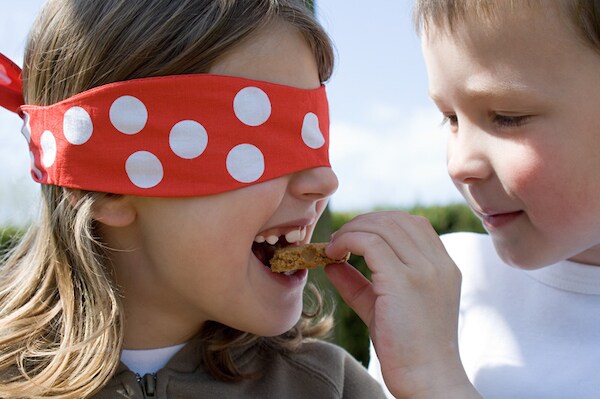
Parents and caregivers can make this as simple or elaborate as they’d like. For instance, consider preparing broccoli three ways — raw, steamed and roasted with olive oil and salt — and having kids taste each one blindfolded and try to guess which is which, suggests Dani Lebovitz, a registered dietician and author of “STEAM-Powered Food Adventures: 101+ Child-Led Explorations for Curious Kids.” “This is perfect for kids ages 3 and up,” she says. “It enhances sensory exploration, encouraging kids to be more open to trying new foods through a fun and playful experience.”
2. “Fancy restaurant”
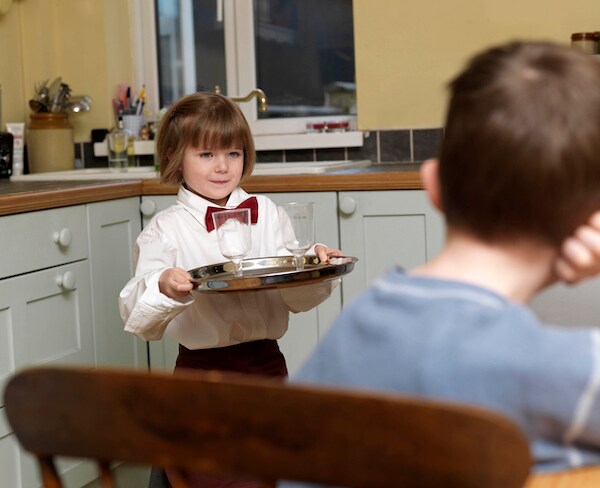
“Fancy restaurant” is a favorite of Alexandra Turnbull’s, a registered dietitian specializing in child nutrition and picky eating at The Family Nutritionist. And it’s guaranteed to be a slam dunk. “Have kids role-play the chef, waiter, etc., and create a meal for the family,” she suggests. Costumes very much encouraged.
3. Make art
This is one of the simplest cooking activities for kids (and practically mess-free!). “Kids can take pieces of cut-up fruits and veggies and combine them with snacks like pretzels or goldfish to create smiley faces, animal shapes or really anything they want!” says Van’t Zelfden.
4. Cook the alphabet
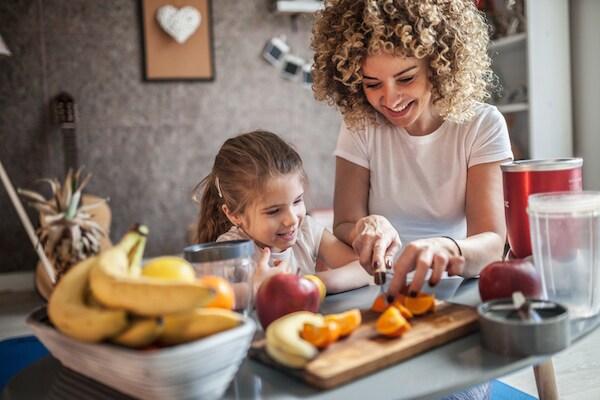
Have your child pick a few letters out of the alphabet and cook together using only ingredients that start with those letters. Good luck if you get “X”!
5. Ingredient scavenger hunt
According to Lebovitz, having an ingredient scavenger hunt at the grocery store is great for kids 2 and up. “This is the perfect activity if you are looking to keep kids engaged while grocery shopping or have a few extra hands to grab ingredients to prepare a meal,” she explains. “This sparks curiosity and boosts problem-solving skills while making kids more familiar with various ingredients in a playful way.”
6. Ice cream in a baggie competition
Did you know you can make homemade ice cream in a Ziploc baggie? Fun! In order to create the actual (solid) ice cream, all of the ingredients need to be mixed up in a bag. Consider turning this part into a friendly competition by seeing who can solidify the ingredients first.
7. Bread science
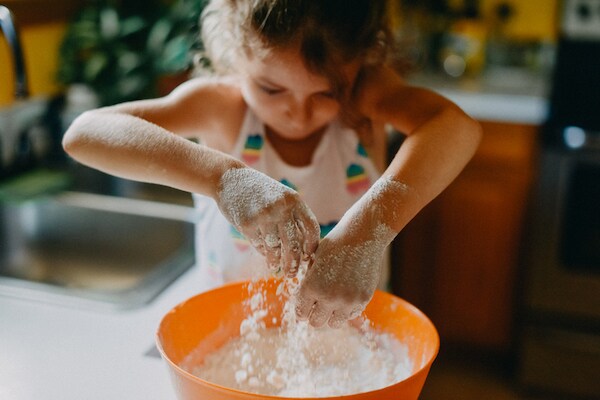
Want to blow your little one’s mind? Lebovitz suggests combining science and baking. “Prepare a quick bread recipe such as banana bread muffins with and without baking powder for kids ages 5 and up!” she says. “Introduce kids to the magic of baking with a fun chemical reaction! Watch as baking powder makes the dough rise, creating fluffy muffins and those without baking powder fall flat. This activity sparks curiosity about how ingredients work together and makes learning science deliciously fun.”
8. Create “sushi”
Whether the kids like real sushi or not, they can still get creative (with an adult’s help) in terms of the type of sushi they create. Let their imaginations take the reins here by seeing what they can turn into sushi. Sandwiches? Candy? Go crazy!
9. Make jewelry
Froot Loops? Cheerios? There are a number of circular foodstuffs that are perfect to put on string for a necklace. Yummy, cute finished product, and as a bonus, it’s great fine motor skills work!
10. Measure and guess game
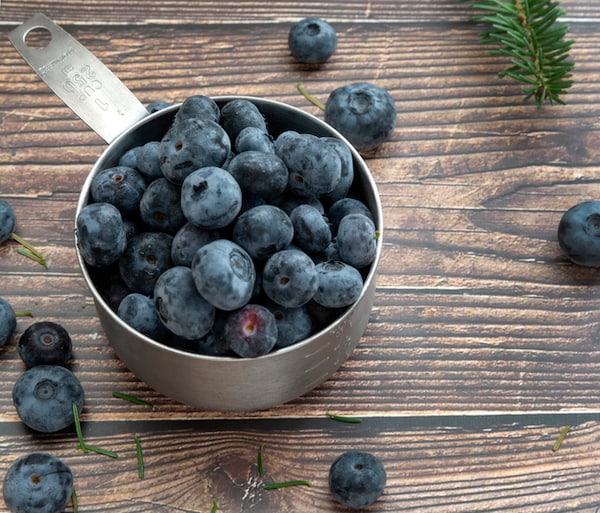
Turn measuring into a guessing game. For instance, if you’re making blueberry muffins, see if the kids can guess how blueberries you put into a bowl (before adding to batter). Whoever comes closest gets the first muffin!
Cooking games for older kids
For teens who know their way around a kitchen and older elementary kids who don’t need quite as much help, consider these fun cooking games.
11. Timed cook-off
Nothing like a little friendly competition to pique kids’ interest. According to Shelley Balls, a registered dietitian and nutritionist for Consumer Health Digest, when hosting a timed cook-off for kids, it’s important to let them choose a recipe that is realistic and appropriate for their age and then give them one hour to finish.
“Let them prepare the meal, start to finish without much help within the hour,” she explains. “And at the end ask them open-ended questions to promote communication skills and reflect on their experience. This cook-off could also be completed with a partner or two, making it a fun get-together with friends!”
12. Ingredient challenge
Another favorite of Balls’ is an ingredient challenge, which is a twist on the timed cook-off. Balls explains how to play: “Let kids make a recipe with a specific list of ingredients they have to incorporate but can add as many ingredients as they’d like in addition to the required ones.”
“For example, maybe your required ingredients are eggs and canola oil, and they can add in additional ingredients such as cheese, or spinach with their creativity!” she continues. “Have a panel of ‘judges’ at the end to score the dish.”
13. Food group challenge

If you want to take things up a notch (perhaps with teens), Balls suggest a food group challenge. “Have kids pick one food from each of the five food groups and use each one to create a meal!” she says.
14. Blindfolded cooking challenge
Tasting food blindfolded is one thing, but cooking it with your eyes covered?! The kitchen is guaranteed to get messy with this cooking game, but the kids will be cracking up the whole time — and who knows, you may even get some food out of it!
15. Zero waste meal
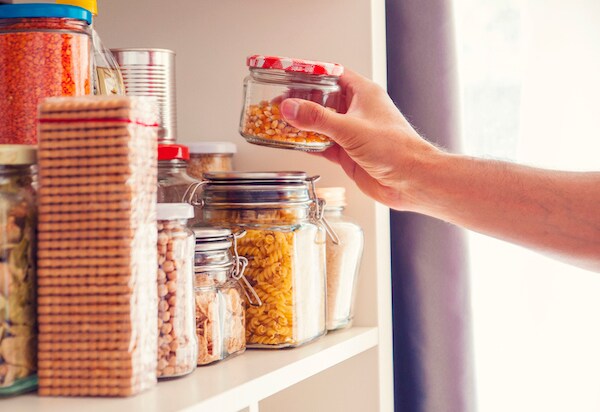
Want to clean out the pantry and fridge? See if kids have what it takes to make a zero waste meal, using only things that are in the house. Out of butter? Time to get creative!
16. Budget challenge
Food and finances go hand-in-hand, so why not add the latter to cooking games for kids? Pick a budget and see what kind of meals kids can come up. And get creative! See if they can make one meal under $5 or a meal for four for $10, per this Reddit cooking thread.
17. Appetizer challenge
When it comes to cooking games for kids, not everything needs to be a meal necessarily. Using whichever parameters you’d like — time, ingredients, budget — see if kids can come up with a delicious appetizer or two.
18. Try the 1-minute cookie challenge
There are a number of food and cooking challenges on social media, but the one-minute cookie challenge is about as simple as it gets — and it teaches kids about the science of baking, too!
The bottom line
The benefits of playing cooking games with kids, and having them involved in meal prep in general, are plentiful.
“Food and cooking games for kids promote creativity, better food acceptance, increase nutrient intake and increase confidence,” notes Balls. “Letting kids get involved with food is a great way to raise less picky and more adventurous eaters. If you have a picky eater on your hands, getting your child involved with the cooking process can improve their willingness to try the foods they have helped prepare.”





